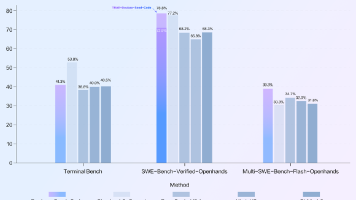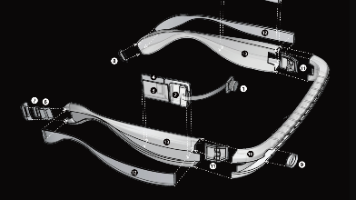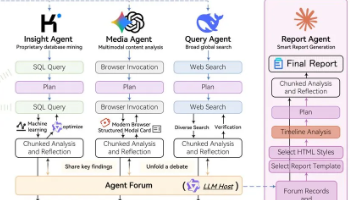【Vue3】前端Vue3最常用的 20 道面试题总结(含详细代码解析)
10分钟彻底搞定20道最常用前端vue3开发面试题
以下是老曹关于 Vue 3 最常用的 20 道面试题总结,涵盖 Vue 3 的核心特性如 Composition API、响应式系统(ref / reactive)、生命周期钩子、组件通信、Teleport、Suspense、自定义指令等高频知识点。每道题都配有详细解释和代码示例,适合用于前端开发岗位的 Vue 3 技术面试准备,大家可以码住随时翻出来查阅背诵和练习!
1. Vue 3 和 Vue 2 的区别是什么?
问题: 解释 Vue 3 相比 Vue 2 的主要改进点。(最主要,不是全部,全部后续老曹会再扩展)
答案:
| 特性 | Vue 2 | Vue 3 |
|---|---|---|
| 响应式系统 | Object.defineProperty |
Proxy |
| 架构 | 单一源码 | 模块化架构(Tree-shakable) |
| Composition API | ❌ | ✅ |
| Fragment | ❌ | ✅ |
| Suspense 组件 | ❌ | ✅ |
| 自定义渲染器支持 | 有限 | 更灵活 |
| 支持 TypeScript | ❌(需额外配置) | ✅ 原生支持 |
// Vue 3 示例:使用 Composition API
import { ref, onMounted } from 'vue';
export default {
setup() {
const count = ref(0);
function increment() {
count.value++;
}
onMounted(() => {
console.log('组件挂载');
});
return { count, increment };
}
};
2. 如何在 Vue 3 中创建一个响应式对象?
问题: 使用 reactive() 创建一个响应式用户对象。
答案:
使用 reactive() 创建深层响应式对象。
import { reactive } from 'vue';
const user = reactive({
name: 'Alice',
age: 25
});
3. ref() 和 reactive() 的区别?
问题: 写出两者的不同点及适用场景。
答案:
ref():适用于基本类型或单个值。reactive():适用于对象或复杂结构。
import { ref, reactive } from 'vue';
const count = ref(0); // 基本类型
const user = reactive({ name: 'Bob' }); // 对象
count.value++; // 必须用 .value
user.name = 'Tom'; // 不需要 .value
4. Vue 3 中如何监听数据变化?
问题: 使用 watchEffect 和 watch 的方式分别写出监听逻辑。
答案:
watchEffect:自动追踪依赖并执行副作用。watch:手动指定监听的目标。
import { ref, watchEffect, watch } from 'vue';
const count = ref(0);
// watchEffect
watchEffect(() => {
console.log('Count changed:', count.value);
});
// watch
watch(count, (newVal, oldVal) => {
console.log(`从 ${oldVal} 变为 ${newVal}`);
});
5. Vue 3 的生命周期钩子有哪些?如何使用?
问题: 在 setup() 中使用 onMounted 生命周期钩子。
答案:
Vue 3 提供了与 Vue 2 类似的生命周期钩子,但必须从 vue 导入使用。
import { onMounted } from 'vue';
export default {
setup() {
onMounted(() => {
console.log('组件已挂载');
});
}
};
6. Vue 3 中如何进行父子组件通信?
问题: 父组件向子组件传递数据,并触发事件。
答案:
使用 props接收父组件数据,使用 emit 触发事件。
// 子组件 Child.vue
export default {
props: ['title'],
emits: ['update'],
setup(props, { emit }) {
function handleClick() {
emit('update', 'New Value');
}
return { handleClick };
}
};
// 父组件 Parent.vue
<template>
<Child :title="msg" @update="handleUpdate" />
</template>
<script>
import Child from './Child.vue';
export default {
components: { Child },
data() {
return {
msg: 'Hello'
};
},
methods: {
handleUpdate(value) {
console.log('收到更新:', value);
}
}
};
</script>
7. Vue 3 的 setup() 函数的作用是什么?
问题: setup() 是什么?为什么它很重要?
答案:
setup()是 Vue 3 Composition API 的入口函数。- 替代 Vue 2 中的
data、methods、computed等选项。 - 更好地组织逻辑复用和模块化代码。
export default {
setup() {
const message = ref('Hello Vue 3');
function changeMessage() {
message.value = 'Updated!';
}
return { message, changeMessage };
}
};
8. Vue 3 中如何实现响应式计算属性?
问题: 使用 computed() 实现一个计算属性。
答案:
使用 computed() 创建响应式计算属性。
import { ref, computed } from 'vue';
export default {
setup() {
const firstName = ref('John');
const lastName = ref('Doe');
const fullName = computed(() => `${firstName.value} ${lastName.value}`);
return { firstName, lastName, fullName };
}
};
9. provide() 和 inject() 的作用是什么?
问题: 如何跨层级传递数据?
答案:
用于祖先组件向后代组件注入依赖,不通过 props 逐层传递。
// 祖先组件
import { provide, ref } from 'vue';
export default {
setup() {
const theme = ref('dark');
provide('theme', theme);
return { theme };
}
};
// 后代组件
import { inject } from 'vue';
export default {
setup() {
const theme = inject('theme');
return { theme };
}
};
10. Vue 3 中如何使用插槽(Slot)?
问题: 实现一个默认插槽和具名插槽。
答案:
<!-- 父组件 -->
<template>
<Card>
<template #default>这是默认插槽内容</template>
<template #header>这是头部插槽</template>
</Card>
</template>
<!-- 子组件 Card.vue -->
<template>
<div class="card">
<header><slot name="header"></slot></header>
<main><slot></slot></main>
</div>
</template>
11. Vue 3 中的 Teleport 有什么用途?
问题: 如何将模态框渲染到 <body> 下?
答案:Teleport 可以将组件渲染到 DOM 中任意位置。
<template>
<teleport to="body">
<div v-if="showModal" class="modal">这是一个模态框</div>
</teleport>
</template>
12. Vue 3 中的 Suspense 是什么?怎么用?
问题: 异步加载组件时显示加载状态。
答案:Suspense 是一个内置组件,用于处理异步依赖。
<template>
<suspense>
<template #default>
<AsyncComponent />
</template>
<template #fallback>
加载中...
</template>
</suspense>
</template>
<script>
const AsyncComponent = defineAsyncComponent(() => import('./MyComponent.vue'));
</script>
13. Vue 3 中的 defineProps 和 defineEmits 是什么?
问题: 在 <script setup> 中如何声明 props 和 emits?
答案:
在 <script setup> 中直接使用 defineProps 和 defineEmits。
<script setup>
import { defineProps, defineEmits } from 'vue';
const props = defineProps(['title']);
const emit = defineEmits(['update']);
function updateTitle() {
emit('update', 'New Title');
}
</script>
<template>
<h1>{{ title }}</h1>
<button @click="updateTitle">更新标题</button>
</template>
14. Vue 3 中如何动态绑定样式?
问题: 动态设置背景颜色。
答案:
使用 :style 绑定对象。
<template>
<div :style="{ backgroundColor: color }">{{ text }}</div>
</template>
<script>
export default {
data() {
return {
color: 'lightblue',
text: '动态样式'
};
}
};
</script>
15. Vue 3 中如何注册全局组件?
问题: 注册一个可全局使用的按钮组件。
答案:
// main.js
import { createApp } from 'vue';
import App from './App.vue';
import MyButton from './components/MyButton.vue';
const app = createApp(App);
app.component('MyButton', MyButton);
app.mount('#app');
<!-- 使用 -->
<template>
<my-button label="提交" />
</template>
16. Vue 3 中如何实现自定义指令?
问题: 实现一个高亮指令 v-highlight。
答案:
// main.js
import { createApp } from 'vue';
import App from './App.vue';
const app = createApp(App);
app.directive('highlight', {
mounted(el) {
el.style.backgroundColor = '#f0e68c';
}
});
app.mount('#app');
<!-- 使用 -->
<template>
<p v-highlight>这段文字被高亮了</p>
</template>
17. Vue 3 中的 nextTick() 怎么用?
问题: 修改 DOM 后等待更新完成。
答案:
使用 nextTick() 确保 DOM 更新完成后执行操作。
import { nextTick } from 'vue';
async function updateData() {
this.message = '更新后的内容';
await nextTick();
console.log('DOM 已更新');
}
18. Vue 3 中如何实现组件懒加载?
问题: 使用异步组件实现路由懒加载。
答案:
使用 defineAsyncComponent 实现懒加载。
import { defineAsyncComponent } from 'vue';
const AsyncComponent = defineAsyncComponent(() =>
import('./components/LazyComponent.vue')
);
export default {
components: {
AsyncComponent
}
};
19. Vue 3 中的 emitter 是什么?如何使用?
问题: 实现非父子组件之间的通信。
答案:
使用第三方库如 mitt 或 EventBus 实现全局通信。
npm install mitt
// eventBus.js
import mitt from 'mitt';
export const emitter = mitt();
// 发送事件
import { emitter } from './eventBus';
emitter.emit('update', 'Hello');
// 接收事件
import { emitter } from './eventBus';
emitter.on('update', (msg) => {
console.log(msg);
});
20. Vue 3 中如何使用 v-model 实现双向绑定?
问题: 实现一个输入框组件的双向绑定。
答案:
使用 modelValue + update:modelValue。
<template>
<input
:value="modelValue"
@input="$emit('update:modelValue', $event.target.value)"
/>
</template>
<script>
export default {
props: ['modelValue'],
emits: ['update:modelValue']
};
</script>
📋 总结表格
| 编号 | 题目描述 | 知识点 | 示例代码 | 常见考察点 |
|---|---|---|---|---|
| 1 | Vue3 与 Vue2 的区别 | 架构升级 | Proxy, Composition API |
框架理解 |
| 2 | 创建响应式对象 | reactive() |
reactive({}) |
数据绑定 |
| 3 | ref() vs reactive() |
响应式机制 | ref(0) vs reactive({}) |
数据封装 |
| 4 | 数据监听 | watchEffect, watch |
watch(count, () => {...}) |
数据驱动 |
| 5 | 生命周期钩子 | onMounted, onUpdated |
onMounted(() => {}) |
组件控制 |
| 6 | 组件通信 | [props]/ emit |
defineProps(['name']) |
组件设计 |
| 7 | setup() 的作用 |
Composition API 入口 | setup() { return {} } |
逻辑组织 |
| 8 | 计算属性 | computed() |
computed(() => a + b) |
响应式优化 |
| 9 | 跨级传参 | provide/inject |
provide('theme', 'dark') |
数据共享 |
| 10 | 插槽使用 | 默认插槽 / 具名插槽 | <slot name="header" /> |
组件扩展 |
| 11 | Teleport 的用途 |
渲染到其他节点 | <teleport to="body">...</teleport> |
DOM 结构优化 |
| 12 | Suspense 的用途 |
异步加载 | <suspense><template #default>... |
异步组件 |
| 13 | <script setup> 中的 [props]/ emit |
快捷方式 | defineProps(['title']) |
新语法糖 |
| 14 | 动态绑定样式 | :style |
:style="{ color: textColor }" |
样式控制 |
| 15 | 全局组件注册 | component() |
app.component('MyButton', Button) |
组件复用 |
| 16 | 自定义指令 | directive() |
app.directive('highlight', { mounted: ... }) |
扩展能力 |
| 17 | nextTick() 的用途 |
DOM 更新监听 | await nextTick() |
渲染流程控制 |
| 18 | 组件懒加载 | 异步组件 | defineAsyncComponent(() => import(...)) |
性能优化 |
| 19 | 全局事件通信 | mitt |
emitter.on('event', fn) |
跨组件通信 |
| 20 | v-model 的实现 |
双向绑定 | modelValue, update:modelValue |
表单组件设计 |
📌 高频考点补充
| 考点 | 描述 |
|---|---|
| Composition API | 替代 Options API,提升逻辑复用 |
| Reactivity API | ref, reactive, toRefs, watch, computed |
| Teleport / Portal | 渲染到任意 DOM 节点 |
| Fragment | 支持多个根节点 |
| TypeScript 支持 | 完整 TS 类型推导 |
| Custom Renderer | 可定制渲染器(如 Canvas、SSR) |
| 性能优化 | 更小的体积、更快的 Diff 算法 |
| 组合函数(Composable) | 封装可复用逻辑 |
| Vue 3 的编译器优化 | Block Tree、Patch Flags |
| Vue 3 的生态支持 | Vite、Pinia、Vue Router 4、Element Plus |
更多推荐
 已为社区贡献1条内容
已为社区贡献1条内容









所有评论(0)